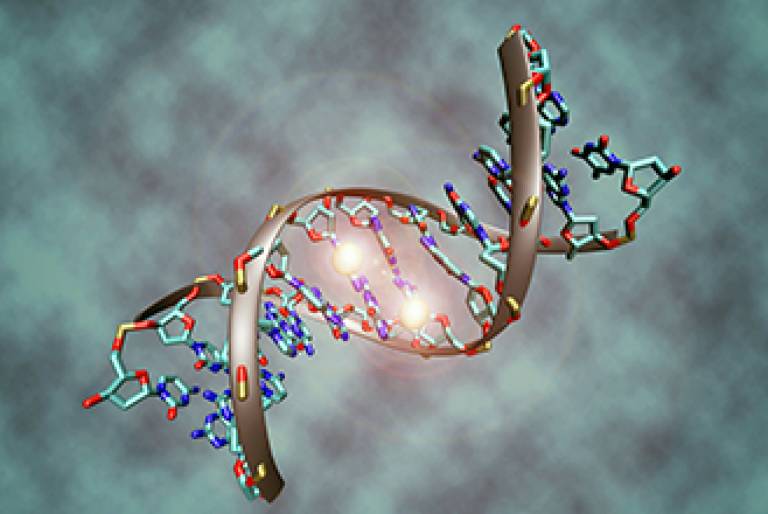Improvements in epigenomic sequencing technologies could enhance cancer diagnostics
27 June 2016
An international research collaboration led by UCL scientists has developed ways to improve the quality and accuracy of information harvested from epigenome sequencing datasets in two new research papers published jointly in Nature Biotechnology and Nature Communications today.

According to the studies, epigenome sequencing technologies can allow for more comprehensive analysis of cancers - a key component in the development of targeted approaches to combat cancer.
Epigenetics is a relatively new and rapidly evolving area of cancer research and refers to chemical modifications to DNA that turn genes ‘on’ or ‘off’. These modifications do not change the DNA sequence itself but the way it functions. In this way, epigenetic modifications help determine cellular identity i.e. what distinguishes a skin cell from a brain or other type of cell. Currently, sophisticated technologies exist that can be used to detect epigenetic changes in tissue samples. In many cancers, epigenetic variants are more frequent than genetic variants, so can therefore provide vital information for understanding how cancers develop and progress.
A key question for the researchers involved in the studies was whether epigenome sequencing technologies could be improved to detect such modifications much more comprehensively and efficiently.
“Our studies focused on measuring one of the most commonly known epigenetic modifications: DNA Methylation. This is a chemical ‘tag’ that attaches to the genetic material (DNA) of a cell, which can alter the behaviour of that cell,” explains Dr Emanuele Libertini, UCL Cancer Institute Research Associate and lead author of the studies. “We are looking at what information can be extracted from DNA Methylation using whole-genome bisulfite sequencing (WGBS) technology. WGBS has been widely used to generate reference methylomes since 2010 and our improvements empower researchers to obtain additional information that could not be obtained before.”
“To achieve this, we’ve developed a tool that dynamically segments WGBS methylomes into blocks of comethylation (COMETs) from which previously undetected information can be recovered. Given the high cost of WGBS, there is a clear benefit to extracting as much information as possible from a given dataset - our algorithms allow us to extract information that is not available to standard analysis. Essentially, we are offering a way to get more for less.”
Professor Stephan Beck, Head of the Medical Genomics Research Group at UCL Cancer Institute, says: “This exciting new technology will advance our ability to understand phenotypic plasticity in health and disease, an important aspect of cancer research”.
This work is the result of an international collaboration involving BLUEPRINT, EpiGeneSys, EpiTrain and Roadmap Epigenomics and was led by Professor Stephan Beck (UCL Cancer Institute) and Dr. Rifat Hamoudi (UCL Division of Surgery and Interventional Science)
Further information
Research paper ‘Information recovery from low coverage whole- genome bisulfite sequencing’ Nature Communications http://doi.org/10.1038/ncomms11306
Research Paper ‘Saturation analysis for whole-genome bisulfite sequencing data’ Nature Biotechnology http://dx.doi.org/10.1038/nbt.3524
Companion papers:
‘Quantitative comparison of DNA methylation assays for large-scale validation and epigenetic biomarker development’ Nature Biotechnology. http://doi.org/10.1038/nbt.3605
‘Chromatin accessibility maps of chronic lymphocytic leukemia identify subtype-specific epigenome signatures and transcription regulatory networks’ Nature Communications http://doi.org/10.1038/ncomms11938
Links
- CeMM press release
- UCL Division of Surgery and Interventional Science
- Dr Rifat Hamoudi academic profile
- Professor Stephan Beck academic profile
- Beck Lab: www.ucl.ac.uk/cancer/research/department-cancer-biology/medical-genomics-group
- IHEC: http://ihec-epigenomes.org/
- CeMM: http://www.cemm.oeaw.ac.at/
Image: A DNA molecule that is methylated on both strands on the center cytosine. .[Details: The picture shows the crystal structure of a short DNA helix with sequence "accgcCGgcgcc", which is methylated on both strands at the center cytosine. The structure was taken from the Protein Data Bank (accession number 329D), rendering was performed with VMD and post-processing was done in Photoshop.] Credit: Christoph Bock/CeMM
 Close
Close

